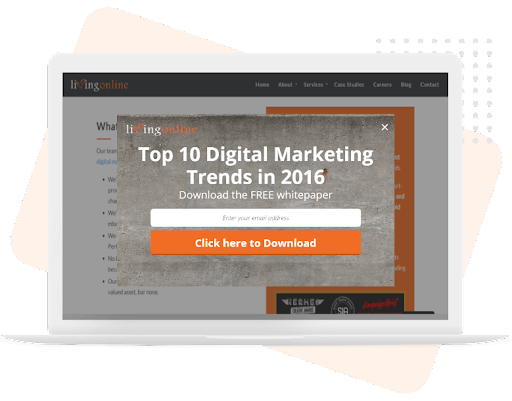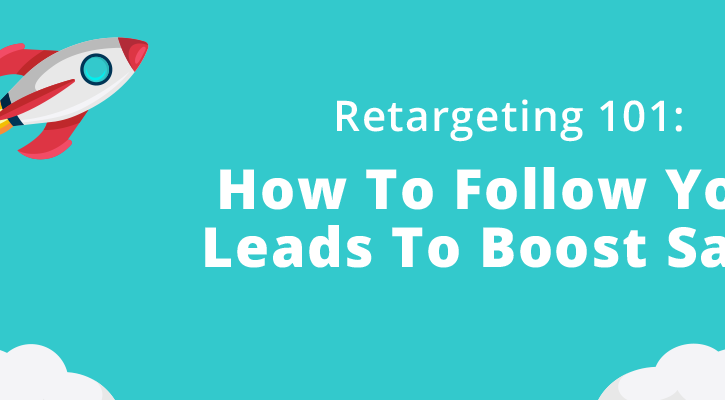
Nowadays, most marketing teams focus on directing traffic to their websites with the hope of converting them into qualified leads. But that’s not where the battle ends. To propel your company towards long-term, sustainable growth, you must also get more out of existing traffic and leads rather than relying entirely on new traffic and ignoring the rest. That is exactly where CRO marketing comes in.
In this guide, we’ll tell you more about the power of CRO, or Conversion Rate Optimization, why you should focus on your conversion rate, and how you must go on about it to make the process smooth and profitable for your business.
What is CRO Marketing?
CRO marketing is a process where you deliberately take steps to increase the percentage of your website visitors who take action that you desire or are profitable to your business conversion goals. For example, you may entice a user into subscribing to your mailing lists, filling out a survey, signing up for a free trial, downloading an ebook, or more, and they’d be considered as a part of your CRO marketing strategy.
CRO marketing is paramount to your business because conversion optimization lets your marketing efforts have the edge over other businesses that do not practice CRO marketing actively.
The optimization actions could be anything from meeting your main business conversion goal to achieving micro conversions. For example, while visitors making an online purchase on an eCommerce site could be your primary goal, clicking the ‘add to cart button,’ which would push them ahead in the sales funnel, could serve as a micro-conversion.
Importance of CRO Marketing
Let us imagine this scenario — you are running an eCommerce store with approximately 10000 visits per month, but the total conversion rate comes down to 0.2%. It means that only 20 people out of your total visitor count are doing something worthwhile that adds value to your business. Taking the consequence a bit further, you discover you have less than a couple of dozen purchases monthly, which will not be enough to cover your CPA (Cost per Acquisition) expenses.
Therefore, it can be seen that CRO veritably impacts your revenue and ROI, but apart from that, CRO is also crucial for a plethora of other reasons that we will discuss below.
Reduces bounce rates — CRO marketing considerably improves the usability and navigation convenience of a website. Small changes as simple as a clear CTA (Call to Action) button, appealing layout, legible font, etc., can make all the difference in how well your visitors engage with your site. For instance, using Shopify upsell apps can enhance your product offerings, making it easier for customers to find complementary products and thereby increasing their likelihood of staying longer.
Improves dwell time — Dwell time is the time a visitor spends on your website after landing on it from a search engine. Including valuable information and an easily navigable layout are key to increasing user engagement, and as engagement increases, visitors become more prone to consider a purchase and to refer your brand further.
Makes content and marketing communications more relevant — When you consciously make your web pages CRO-oriented, the quality and relevance of blog posts, ads, banners, and other marketing elements often get automatically upgraded as they are crafted with the goal of connecting with your visitors more readily.
Engage customers — The key to getting a user to convert is to make your website engaging to them. CRO marketing specifically focuses on the elements that would help you reach the goal, and your website comes out more appealing than ever owing to this approach.
Enhances customer loyalty —A prime strategy of CRO marketing is to give your visitors exactly what they want. This boosts customer loyalty as they are likely to return to your website when all the expectations and requirements are met adequately.
Provide additional insights about your targeted audience —Analytics is an integral part of CRO. As such, you can observe your intended audience’s behavioral patterns through the data mined and form reliable opinions about your further strategies. This information is helpful not just for Conversion Optimization but for other marketing as well.
How to Calculate Conversion Rate?
You can calculate the conversion rate for your website by dividing the number of conversions by the total number of visitors and multiplying the resultant number by 100 to get a percentage.
In other words,
Converstion Rate = Number of conversions/ Total visitors* 1oo
As long as you know what you’re defining a conversion for, calculating your conversion rate becomes easy. All you have to do is plug in the two values in their respective places and multiply the resulting number by 100.
For example, if you’re defining the conversion rate as how many people take positive action on a survey form, and you have the questionnaire on every single page of your website — you can obtain the conversion rate by dividing the number of forms submitted by the total number of website visitors and multiply it by 100.
If you have 500 submissions against 20,000 visitors for a particular time frame, your conversion rate would be 2.5%.
You can repeat the calculation for every page that has a conversion opportunity on your website. Just make sure that you are counting the number of visitors only on the web pages where the conversion point is hosted.
Alternatively, you can calculate your website’s overall conversion rate by dividing the total number of conversions for every conversion opportunity on your site by the total number of visitors on your site.
Where Should You Implement a Conversion Optimization Strategy?
A part of implementing any strategy is knowing where to implement them to obtain the best results. While CRO is beneficial to your website as a whole, the four key areas of your website mentioned below have the most potential to get you the maximum yield.
Homepage
The homepage of any website is the prime contender when it comes to vying for the most suitable spot to implement CRO. Not only do they make the very first impression on your visitors, but provide an opportunity to retain those visitors and guide them further into your website as well.
You can optimize your homepage conversion by embedding links to product descriptions, offering a freebie with a signup button (a free guide, tour, or ebook can serve as the perfect enticements), or even incorporating an intuitive chatbot that initiates conversations automatically from visitors when they first open your website or at any point during their browsing experience.
Landing Page
Since landing pages are inherently devised to make people take action, it’s only right that they have the highest average conversion rate of all signup forms at 23%. They, by default, make for great places to implement CRO tactics. For example, you can optimize an event landing page with a snippet of the previous year’s event to persuade visitors to register this year. Or, a landing page that promises a free resource on undertaking certain actions can be optimized with preview content depicting exactly what they are getting. The preview here acts as the perfect encouragement that will get users to consider downloading it, while they might have ignored the CTA otherwise.
Pricing Page
A website’s pricing page is the make-or-break point for many customers. An unoptimized, difficult pricing page discourages them from proceeding with the purchase. In worst-case scenarios, it can stop a conversion from happening when the process is almost ninety percent underway. CRO can help a pricing page convert visitors by altering the payment intervals (yearly, semiannual, or monthly payments), mentioning the product features with each pricing plan, including a phone number for visitors to call for customized price quotes or even a simple popup form.
For example, LivingOnline saw a weekly increase of 900% in email subscribers after using a Picreel popup builder!

Blog
A blog is one of the most viable media of conversion for a website. In addition to publishing thoughtful and helpful content about your brand, they have the ability to persuade your visitors to convert into leads. This is primarily due to the explanatory nature of blogs, and you can expound on that by adding conversion-optimized practices for even better results. This process often includes adding calls-to-action (CTA) throughout an article or inviting readers to learn more about a topic by submitting their email addresses in exchange for an ebook or industry report.
Steps to Build a CRO Marketing Strategy
Like any other marketing strategy, CRO is a fairly complex procedure that has immense potential to boost conversion rates but also needs careful consideration and planning for it to work. You have to go through the preparatory steps, integrate the right software, analyze the information, and plan ahead to get the best results out of your efforts.
Here are some of the major steps that will help you the most out of your CRO strategies.
Understand why people come to your website
Most people arrive at your website with a goal in mind. They may simply want to browse a product, read your blogs, check the contact information, or actually purchase something. You can analyze client search keywords to understand user intent, and deploy keyword research software to identify related keywords that effectively engage and capture the target audience. Once you pinpoint the intent, it becomes easier to analyze your target audience and determine what can make them convert. At this point, audit your current marketing strategies if required and use Google Analytics to measure and segment the traffic into their respective pages.
Create a buyer persona
Examine the existing market data to gather all the demographic information you can about your current and prospective buyers. You can also use popup surveys, feedback from the sales team, Net Promoter score, and other similar methods of collating data for this purpose. This will help you create an accurate customer persona and completely understand the buyer’s mindset. Based on this, you can build a tailored CRO strategy instead of resorting to cliches.
Use analytics software to detect problems
Nowadays, you need even more granular data about your users to form an idea of their browsing behaviors. The task gets exponentially easier with heatmaps and web-tracking tools that make it possible to see how visitors browse pages, where they get stuck or drop off, and why. This information is crucial to understanding the possible reasons why conversion rates often remain low despite getting considerable traffic on the pages.
Think about how to optimize conversion
Once you have sufficient information, it’s time to plan the optimization strategy carefully. User experience optimization is the process of learning what your customer needs based on the data obtained from analytical tools. The optimization strategy should be oriented towards solving specific user needs. For example, if a banner on a landing page is found to be mostly ignored by the visitors, it’s time to remove it immediately and come up with something new that impacts user actions more positively.
Implement the changes and monitor the results
After optimizing your website with the formulated strategies, measure the KPIs regularly to see what’s working and what needs improvement. You may need to repeat this process for each strategy you implement to gauge the best working design. Analyzing it further will provide you with all the required information on the steps that you need to take further down the line.
How to Improve CRO Marketing?
Despite every case having its own unique set of problems and their respective solutions, some tips work universally for every website. Given below is a set of tried-and-tested methods that have been known to generate a high volume of conversions.
Add Popups
Although once infamous for disrupting the user experience, popups have re-evolved with technologies that make them one of the most suitable media for displaying critical information like special offers, onboarding steps, instructions, and more in a crisp, eye-catching manner. Use them judiciously as a part of your CRO practices to improve your page metrics.
Read More: How to Guide Visitors Using Popups to Best Offers, Content & Products
Include CTAs
CTAs speak to users directly and, most importantly, urge them to take action. Replace long-winded sentences and explanations with clear instructions that guide your visitors towards your desired actions. One of the best strategies to use CTAs is to embed them as anchored texts within blogs when the readers are actively engaged in knowing about your brand and are thus more easily convinced.
Make Conversion Easy
Complicated, time-taking procedures only serve to annoy customers. If you have the goal of getting your visitors to convert in your mind, make the conversion process as simple as possible. Would you like more orders? Then allow your users to make a purchase in one click, speed up the registration process, or at least make the payment options varied and hassle-free.
Eliminate unnecessary form fields
If you are looking to collect information from people, don’t use forms with too many fields requesting too many details. Lengthy forms are often off-putting and can make your visitors bounce off at the last moment.
Add reviews, testimonials, and case studies
Customer reviews, testimonials, and case studies are essentially social proofs that increase your brand’s authority and credibility. Case studies are particularly effective in B2B as a means to illustrate your services and their impacts. Include them on your website to help customers pick the right product more readily.
Add a countdown timer
Countdown timers induce a sense of scarcity and urgency in customers, whereas they’d be lax about it otherwise. Draw them in with limited-time sales and offers and see your conversions rise fast.
Ready to Boost Your Conversions?
There are as many ways as there are opinions, and the same holds true for CRO strategies as well. The ways may be many, but ultimately, you need to figure out what your users best respond to and what drives the best yields for your business.
To simplify things a bit, here is a brief checklist of the follow-up actions to keep in mind when getting started with CRO today –
- Use these three formulas to gauge the effectiveness of your CRO strategies –
- Conversion Rate (Leads Generated ÷ Website Traffic x 100 = Conversion Rate %)
- Number of Net New Customers (New Revenue Goal ÷ Average Sales Price = Number of New Customers), and
- Lead Goal (Number of New Customers ÷ Lead-to-Customer Close Rate % = Lead Goal)
- Experiment with CRO strategies freely to discover what works for your business the best.
- Utilize the PIE Framework to help prioritize your strategy.
Read More - 40+ Best Conversion Rate Optimization Tools to Grow Business in 2022
FREE. All Features. FOREVER!
Try our Forever FREE account with all premium features!







